
hotline:
17715390137
Tel/Wechat:
18101240246 (Technology)
0512-68565571
Email:mxenes@163.com (Sales Engineer)bkxc.bonnie@gmail.com
Scan the code to follow or search the official account on WeChat:
2D Materials Fronrier After paying attention,
click on the lower right corner to contact us,
Enter enterprise WeChat.
Professional Services Online

管理员【微信QQ同步521006914】官方网站(www.TL9043.com)腾龙国际客服24小时在线,【公司直属客服】【公司直属开户】【大额无忧】支持视频验证现场。
MXene is a new type of two-dimensional nanomaterial developed in recent years. The diversity of structure and composition, excellent electrical conductivity and rich surface chemical activity make MXene the fastest growing class in the two-dimensional material family, and its applications It has been expanded to many fields such as electrochemical energy storage, biomedicine, sensing, environmental protection, electromagnetic shielding, photoelectric catalysis and so on. At present, the scientific research personnel engaged in MXene basic research are located in more than 70 countries around the world, and China is currently the country with the most MXene research. The first International Symposium on MXene Energy Storage Materials was held at Jilin University in May 2019 and attracted about 200 people from all over the world. The second International MXene Symposium held by Beijing University of Chemical Technology in May 2019 extended the topics to all areas of MXenes research, attracting more than 450 people from 14 countries and regions.
In order to further promote the development of MXene materials and focus on the latest developments in the field of MXene materials, Professor Xu Bin of Beijing University of Chemical Technology and Professor Yury Gogotsi of Drexel University as guest editors organized a special issue of MXene for "Chinese Chemical Letters" , Which was officially published in the fourth issue of Vol. 31, 2020 in the journal recently. This special issue contains 7 reviews and 16 high-quality research papers covering the preparation and characterization of MXene and its applications in the fields of secondary batteries, supercapacitors, photocatalysis, sensors, electromagnetic shielding, and medicine.
Professor Xu Bin and Professor Yury Gogotsi wrote the editor‘s note of "MXenes – The fastest growing materials family in the two-dimensional world" for this special issue, summarizing the latest research progress of MXene materials, and briefly introducing the papers included in this album .
Next, the editor will give you a brief introduction to this special issue
【Reviews】
One professor Xu Bin, Beijing University of Chemical: MXene for advanced sensor
MXenes has unique surface chemistry, metal-like conductivity, unique two-dimensional morphology and other characteristics, which make it show good application prospects in the field of sensors. The team of Professor Xu Bin of Beijing University of Chemical Technology summarized the progress and application of MXenes and its hybrid materials as sensing materials for advanced sensors. According to the different signals involved in signal conversion, the author divided into three parts: electrochemical (biological) sensors, gas sensors and electrochemiluminescence / fluorescence sensors. It briefly summarizes the advantages and limitations of MXene in sensor preparation, and discusses the application prospects of MXene in sensors.
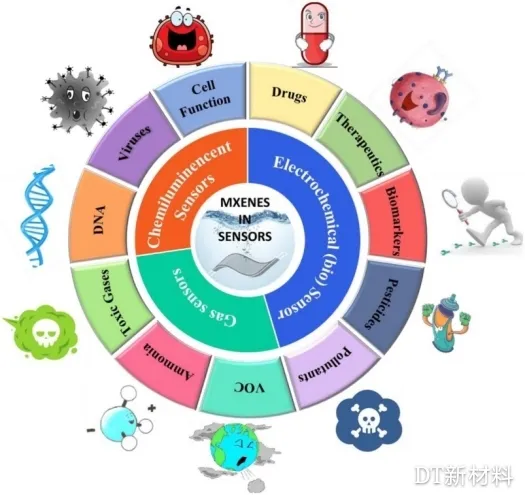
Figure 1. Application of MXene in the field of sensors
II Professor Yang Zong Xian Henan Normal University: MXene application as a catalyst support in the field of carbon monoxide oxidation and ORR
MXene has a high specific surface area, adjustable electronic structure and thermal stability, and can be used as a carrier material for catalysts. In this review, Professor Yang Zongxian‘s team of Henan Normal University discussed the preparation and structure of MXene, and summarized the progress and potential applications of MXene in CO catalytic oxidation and oxygen reduction from the perspective of experiment and theoretical research The challenges and future research directions in this field are prospected.

Figure 2. Schematic diagram of MXenes as a catalyst carrier
Three silicon by Professor Chen Yu Wei & Fung Research Associate: MXene chemical properties in the field of pharmaceutical nano
The research of MXenes in the field of biomedicine has gradually emerged in recent years. Although it is in its infancy, it is undoubtedly that MXenes has a very broad research and application prospect in this field. Professor Chen Yu and associate researcher Feng Wei from the Shanghai Institute of Ceramics of the Chinese Academy of Sciences briefly summarized the latest research progress of 2D MXenes, emphasized the chemical properties of molecular sieve nanomedicine applications, and focused on the synthesis chemistry of MXenes and their use in surface engineering Surface chemistry, physical and chemical properties for molecular sieve applications, and biochemistry for biosafety assessment. In addition, based on the research progress of MXenes in the field of biomedicine, the author also discussed its potential research direction, key challenges and the future development of biomedicine.
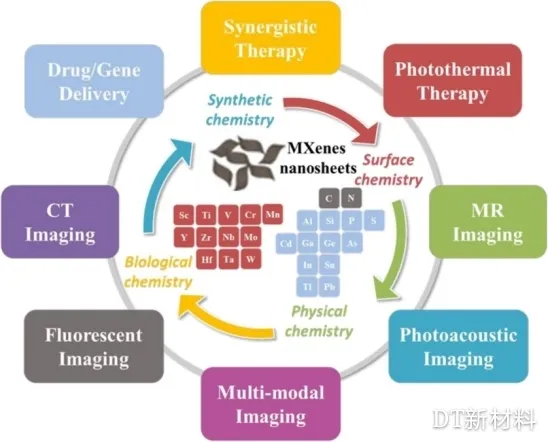
Figure 3. Application of MXenes in biomedical research
Store Professor Guo Xiaohui Northwestern University: MXenes (of Ti . 3 C 2 T X ) in a two-dimensional hybrid material of the energy storage and conversion derivative
MXene-derived two-dimensional hybrid nanomaterials have received extensive attention in the field of energy storage and conversion due to their unique synergistic properties, such as high thermal stability, excellent electrical conductivity, high surface area and excellent electrical and photochemical properties. Professor Xiaohui Guo of Northwest University focused on the application of MXenes (Ti 3 C 2 T x ) -derived two-dimensional hybrid nanomaterials in the conversion and storage of renewable energy, including HER, supercapacitors, lithium-ion batteries and photocatalysis. Finally, the author summarizes the prospects and opportunities of new two-dimensional hybrid nanomaterials derived from MXenes (Ti 3 C 2 T x ) in future sustainable energy technologies.
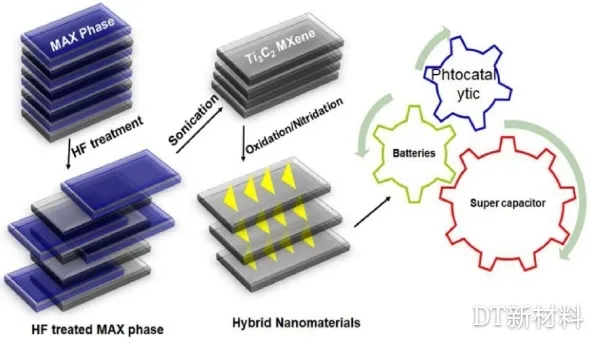
Figure 4. MXene-derived hybrid materials and their applications
Professor Xu Yuanhong, Wu Qingdao University: Application of MXenes in Electrochemical NRR
Electrochemical reduction of N2 (NRR) can not only use protons in water as a source of hydrogen under mild conditions, but also can be driven by renewable electrical energy, so it has attracted great interest from researchers. At present, the main challenge facing NRR is to find efficient electrocatalysts. MXene is a new type of 2D transition metal carbide / nitride / carbonitride, which has received extensive attention in the field of electrocatalysis. Because of its excellent catalytic activity, MXene has made significant progress in electrocatalytic NRR. Therefore, Professor Xu Yuanhong‘s team from Qingdao University briefly reviewed the latest progress of MXene-based catalysts for electrochemical NRR, and summarized the preparation and surface modification of MXene. Preparation provides guidance. In addition, the author summarizes the current research deficiencies and challenges in this field, and looks forward to future research directions.
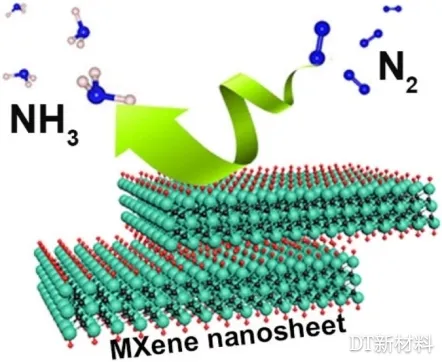
Figure 5. Schematic diagram of MXenes electrochemical nitrogen fixation
Professor Zhou Yanmei of Lu Henan University: Preparation and application of layered composite materials based on intercalated MXenes
MXene has high conductivity, hydrophilicity and excellent electrochemical performance, so it has attracted more and more attention from researchers. However, the layer stacking phenomenon caused by Van der Waals forces limits the practical application of MXenes. By intercalating MXene, an MXene-based layered composite material (IMLC) with an open structure can be obtained, which can effectively improve its physical and chemical properties. Recently, the team of Professor Zhou Yanmei of Henan University reviewed the preparation method and application of IMLC, discussed the application advantages of IMLC in the fields of energy storage, catalysis, sensors, electromagnetic shielding and biomedicine, and commented on its future development prospects.
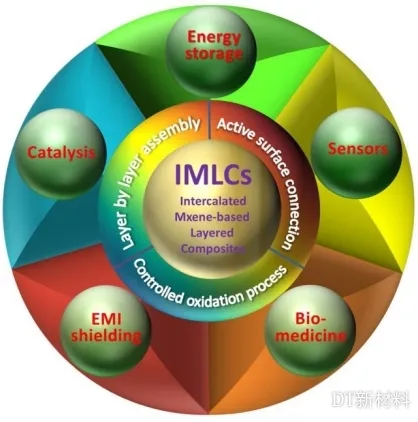
Figure 6. Preparation and application of layered composite materials based on intercalated MXenes
Qi professor USTC Song Li & Chen Shuangming Research Associate: MXenes cations intercalated engineering and X-ray absorption spectroscopy to characterize
The structure adjustment and modification based on MXenes is an important branch of MXenes research. It is worth noting that cation intercalation can increase the interlayer distance of MXene, thereby adjusting the physical and chemical properties of MXene, and synchrotron radiation X-ray characterization has shown important application value in exploring the properties and structure of cations embedded in MXene. Based on this, the team of Professor Song Li and Associate Researcher Chen Shuangming of the University of Science and Technology of China reviewed the application of MXene in energy storage devices by different methods of cation intercalation, and discussed the localization of synchrotron radiation X-ray absorption spectroscopy in the study of ion intercalation MXene Application in coordination and electronic structure.
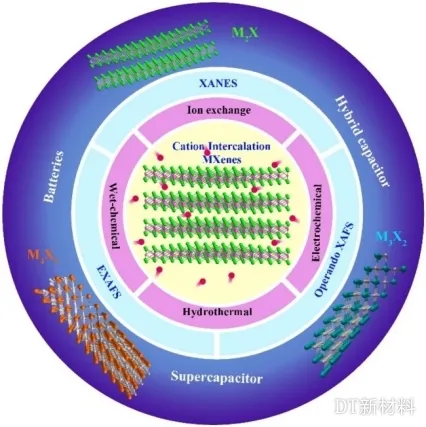
Figure 7. Application of cation intercalation MXenes in the field of energy storage and its X-ray absorption spectrum characterization
【Research Articles】
The research progress of MXenes in different fields in this special issue of MXenes was introduced earlier. In addition to the above review articles, this special issue also reports on the related research work of MXenes, involving the preparation of MXene, and the application of MXene in catalysis, sensors, wastewater treatment, supercapacitors, lithium-ion batteries, lithium-air batteries, and electromagnetic shielding. . The specific content is limited to space and cannot be listed one by one. Interested teachers and students can log on the official website of this thesis to understand (https://www.sciencedirect.com/journal/chinese-chemical-letters/vol/31/issue/4 ).
【references】
1. Bin Xu, Yury Gogotsi. MXenes-The fastest growing materials family in the two-dimentional world. Chin. Chem. Lett. 2020, 31: 919-921.
2. Razium Ali Soomro, Sana Jawaid, Qizhen Zhu, Zaheer Abbas, Bin Xu. A mini-review on MXenes as versatile substrate for advanced sensors. Chin. Chem. Lett. 2020, 31: 922-930.
3. Yiying Zhang, Xilin Zhang, Cheng Cheng, Zongxian Yang. Recent progress of MXenes as the support of catalysts for the CO oxidation and oxygen reduction reaction. Chin. Chem. Lett. 2020, 31: 931-936
4. Yuemei Wang, Wei Feng, Yu Chen. Chemistry of two-dimensional MXene nanosheets in theranostic nanomedicine. Chin. Chem. Lett. 2020, 31: 937-946.
5. Sen Zhao, Ravi Nivetha, Yu Qiu, Xiaohui Guo. Two-dimensional hybrid nanomaterials derived from MXenes (Ti 3 C 2 T x ) as advanced energy storage and conversion applications. Chin. Chem. Lett. 2020, 31: 947- 952.
6. Jie Sun, Wenhan Kong, Zhaoyong Jin, Yaqian Han, Liangyu Ma, Xiaoteng Ding, Yusheng Niu, Yuanhong Xu. Recent advances of MXene as promising catalysts for electrochemical nitrogen reduction reaction. Chin. Chem. Lett. 2020, 31: 953 -960.
7. Shumeng Wu, He Wang, Li Li, Meixia Guo, Zhichong Qi, Qingyou Zhang, Yanmei Zhou. Intercalated MXene-based layered composites: Preparation andapplication. Chin. Chem. Lett. 2020, 31: 961-968.
8. Changda Wang, Shiqiang Wei, Pengjun Zhang, Kefu Zhu, Pin Song, Shuangming Chen, Li Song. Cation-intercalated engineering and X-ray absorption spectroscopic characterizations of two dimensional MXene. Chin. Chem. Lett. 2020, 31: 969 -979.
Article Source:
https://www.sciencedirect.com/journal/chinese-chemical-letters/vol/31/issue/4
Source of information:

| Reminder: Beijing Beike New Material Technology Co., Ltd. supplies products only for scientific research, not for humans |
| All rights reserved © 2019 beijing beike new material Technology Co., Ltd 京ICP备16054715-2号 |